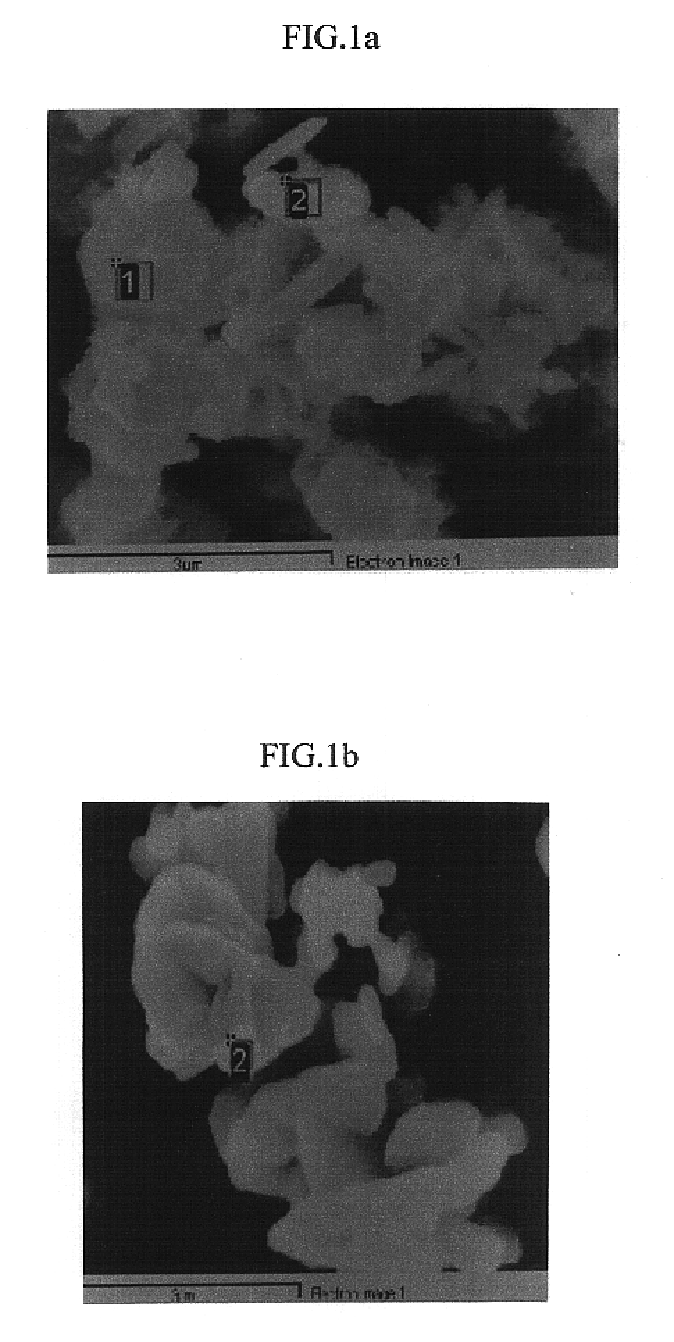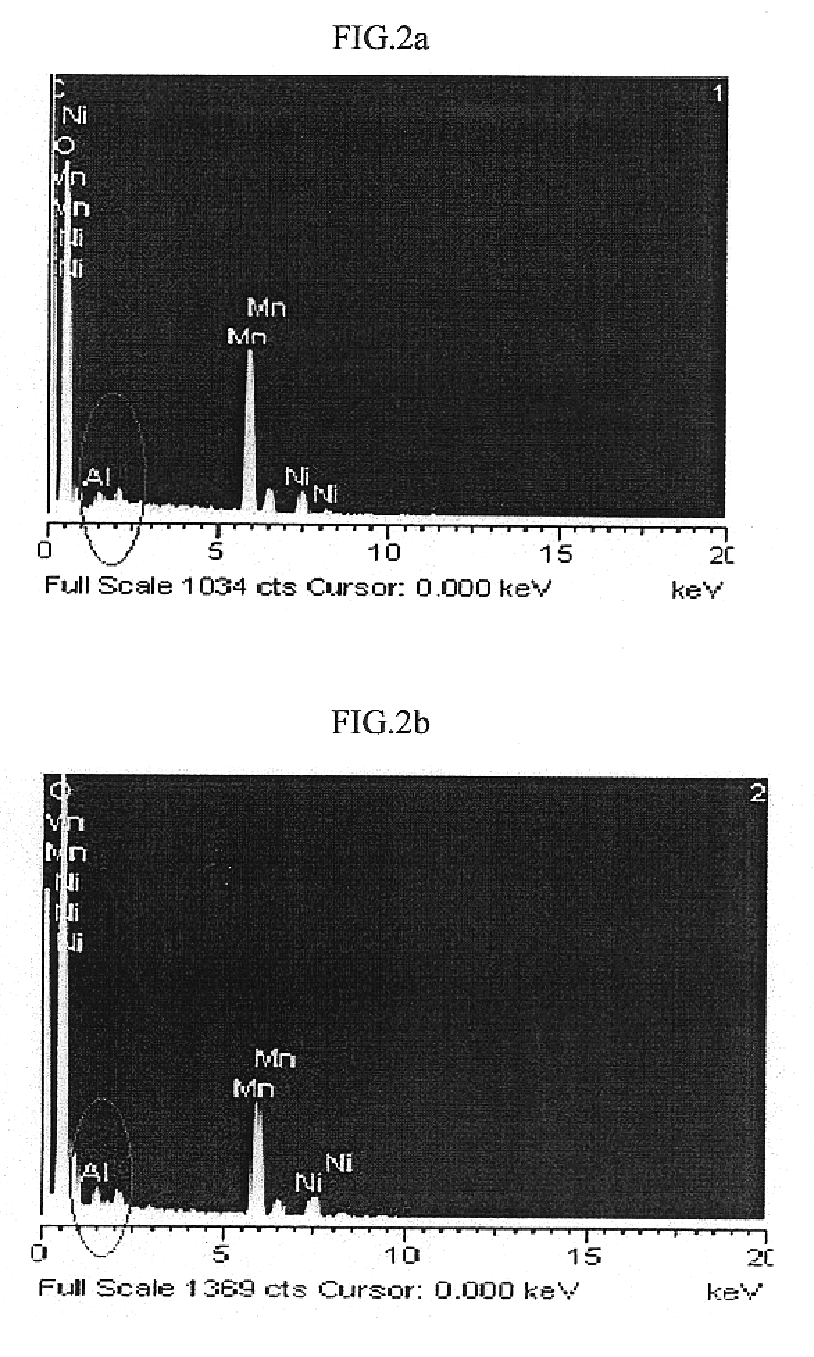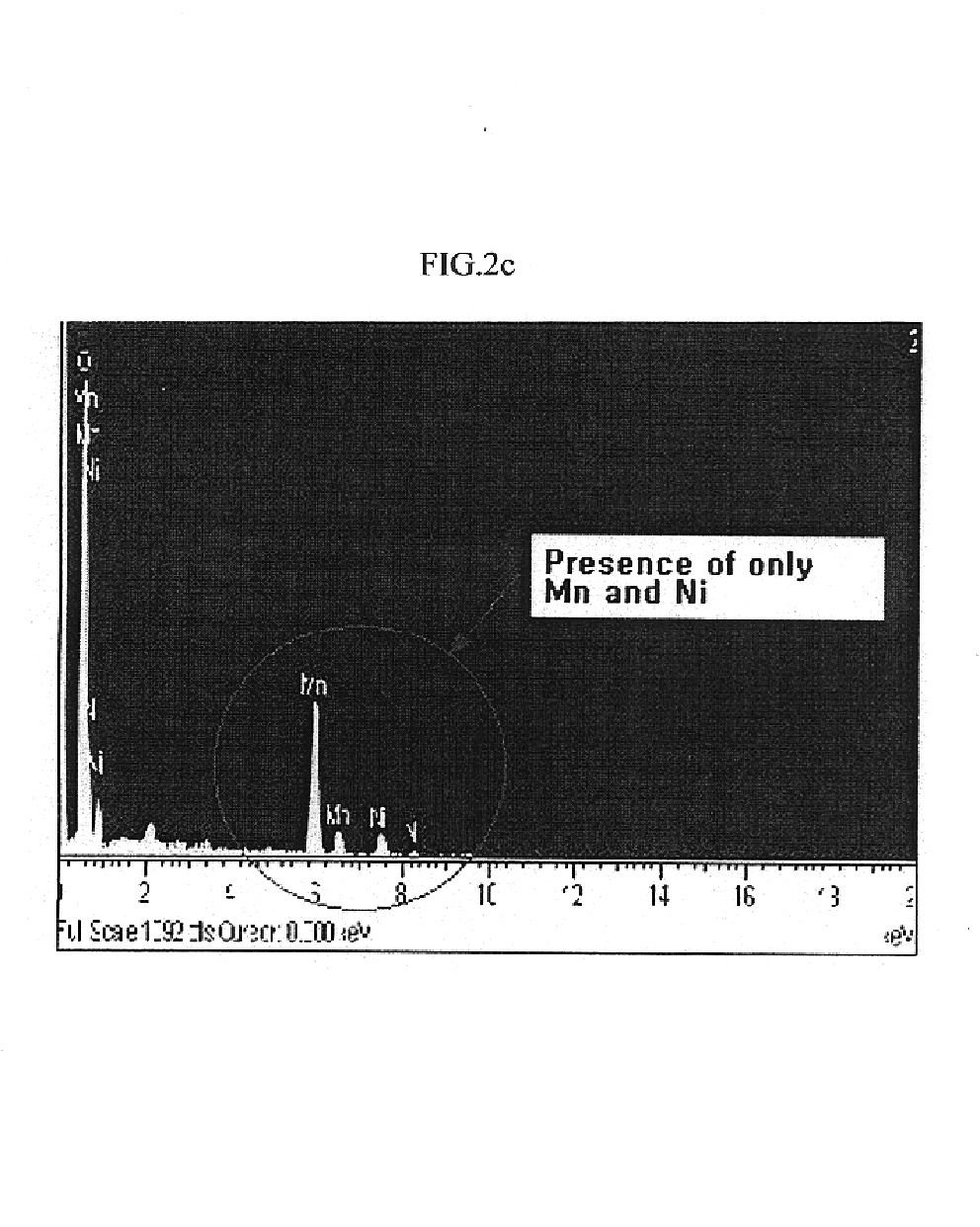Method of preparing positive active material for rechargeable lithium batteries
positive active material technology, applied in the field of preparing a positive active material for a rechargeable lithium battery, can solve the problems of difficult preparation in the desired structure, disadvantageous low capacity, and high specific capacity of licoo/sub>2, so as to improve cycle life characteristics, high charge and discharge rate capability, and high specific capacity
- Summary
- Abstract
- Description
- Claims
- Application Information
AI Technical Summary
Benefits of technology
Problems solved by technology
Method used
Image
Examples
example 1
[0067]Mn(NO3)2 and Ni(NO3)2 were dissolved in water to obtain a solution containing Mn and Ni. NH4OH was added to adjust the pH of this solution to above 9 to obtain Mn0.75Ni0.25(OH)2 by co-precipitation of Ni and Mn.
[0068]1 g of Al-isopropoxide powder was dissolved in 19 g of ethanol to prepare an ethanol suspension of 5% Al-isopropoxide.
[0069]Mn0.75Ni0.25(OH)2, LiOH, and the ethanol suspension of 5% Al-isopropoxide were weighed in an equivalent ratio of Li / (Mn+Ni) / Al=1 / 1 / 0.01, and mixed in an agate mortar until the excess ethanol was evaporated.
[0070]The resultant mixture was first heat-treated at 500° C. for 10 hours under flowing air. The first-heat-treated powder was cooled at room temperature and ground in an agate mortar to prepare a uniform mixture. Subsequently, the powder was subjected to the second heat-treatment at 825° C. for 15 hours under flowing air. The resultant material was sieved through a 325-mesh sieve to obtain a LiMn1.5Ni0.5Al0.01O4 positive active material p...
example 2
[0073]Mn(NO3)2 and Ni(NO3)2 were dissolved in water to obtain a solution containing Mn and Ni. NH4OH was added to adjust the pH of this solution at above 9 to obtain Mn0.75Ni0.25(OH)2 by co-precipitation of Ni and Mn.
[0074]1 g of Al-isopropoxide powder was dissolved in 19 g of ethanol to prepare an ethanol suspension of 5% Al-isopropoxide.
[0075]Mn0.75Ni0.25(OH)2, LiOH, and the ethanol suspension of 5% Al-isopropoxide were weighed in an equivalent ratio of Li / (Mn+Ni) / Al=1 / 1 / 0.03, and mixed in an agate mortar until the excess ethanol was evaporated.
[0076]The resultant mixture was first heat-treated at 500° C. for 10 hours under flowing air. The first-heat-treated powder was cooled at room temperature and ground in an agate mortar to prepare a uniform mixture. Subsequently, the powder was subjected to the second heat-treatment at 850° C. for 15 hours under flowing air. The resultant material was sieved through a 325-mesh sieve to obtain a LiMn1.5Ni0.5Al0.03O4 positive active material p...
example 3
[0079]Mn(NO3)2 and Ni(NO3)2 were dissolved in water to obtain a solution containing Mn and Ni. NH4OH was added to adjust the pH of this solution at above 9 to obtain Mn0.75Ni0.25(OH)2 by co-precipitation of Ni and Mn.
[0080]1 g of Al-isopropoxide powder was dissolved in 19 g of ethanol to prepare an ethanol suspension of 5% Al-isopropoxide.
[0081]Mn0.75Ni0.25(OH)2, LiOH, and the ethanol suspension of 5% Al-isopropoxide were weighed in the equivalent ratio of Li / (Mn+Ni) / Al=1 / 1 / 0.05, and mixed in an agate mortar until the excess ethanol was evaporated. The resultant mixture was first heat-treated at 500° C. for 10 hours under flowing air. The first-heat-treated powder was cooled at room temperature and ground in an agate mortar to prepare a uniform mixture. Subsequently, the powder was subjected to the second heat-treatment at 825° C. for 15 hours under flowing air. The resultant material was sieved through a 325-mesh sieve to obtain a LiMn1.5Ni0.5Al0.05O4 positive active material powde...
PUM
 Login to View More
Login to View More Abstract
Description
Claims
Application Information
 Login to View More
Login to View More - R&D
- Intellectual Property
- Life Sciences
- Materials
- Tech Scout
- Unparalleled Data Quality
- Higher Quality Content
- 60% Fewer Hallucinations
Browse by: Latest US Patents, China's latest patents, Technical Efficacy Thesaurus, Application Domain, Technology Topic, Popular Technical Reports.
© 2025 PatSnap. All rights reserved.Legal|Privacy policy|Modern Slavery Act Transparency Statement|Sitemap|About US| Contact US: help@patsnap.com



